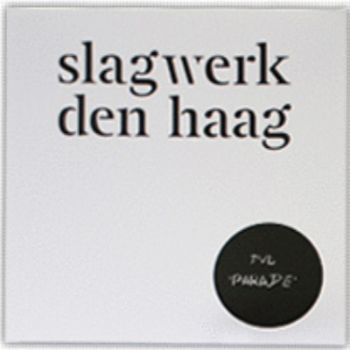No 24 7 Dances for Percussion 4-tet (2004)
For percussion quartet
Commissioned by: Percussion Group The Hague, with financial support from the Netherlands Fund for the Creation of Music
First Performance of the complete piece: Percussion Group The Hague, December 14 2005, Felix Meritis, Amsterdam
Instrumentation: see score
Duration: 26’
Special Features: a fair number of exotic instruments
 Listen/Buy: Slagwerk Den Haag's website
Listen/Buy: Slagwerk Den Haag's website
Info/Program note:
The 7 Dances for Percussion 4-tet (2005) were written for a dance production between Slagwerkgroep Den Haag and Dutch choreographer Marie-Cécile de Bont. Though the pieces are not intended to be danced to, they nevertheless are “dances”, but more in the sense of a Tanz ohne Schritte, like there are Lieder ohne Worte…
The seven movements are based on personal interpretations of what the phenomenon ‘dance’ reminds me of: pacing, the sound of feet on a floor, interactions between groups and soloists, movements in space, historical dance-terminologies and stylized forms. The instrumentation is mainly dominated by wood and skin sounds, which function as a sort of imaginary cross-pollination between the stately aspects of ancient Korean Court Music and a more secular – quasi South American – rasping ensemble… both linked to each other through a shared aesthetic of ‘composite sounds’ (i.e. one action resulting in multiple sounds), but otherwise probably quite surprised to find themselves grouped together like this.
The work uses two different set-ups, consisting of an outer circle and an inner circle. The outer circle – 4 tables behind which the musicians are supposed to stand – are for the non-portable instruments. The inner circle – consisting of a semi-circular row of chairs – for the portable ones. The instruments for the inner circle are supposed to be placed on the floor and picked up when necessary. Routinely moving from inner to outer circle, the actual transportation of the instruments becomes a topic on its own terms.
The 7 Dances mostly make use of non-Western instruments, the most important of which are the Chinese Toms, the Jing (Korean Gong), 3 Philippine Bamboo Buzzers – also known as Balimbing (to be played on the knees), some Korean Shaman Bells, a Darabuka and a small (1 foot long) Bengalese Gopichand – also known as the Ektar.
The order of the Dances is as follows:
Dance # 1: Trio + Solo Dancer
Dance # 2: Solo 1, for Quartet
Dance # 3: Quartet # 1 – Pas de Cinq
Dance # 4: Duo I, for 4 Players
Dance # 5: Two Duos for Quartet
Dance # 6: Quartet # 2 – Pas de Deux
Dance # 7: Duo II, for 4 Players
The overall form of the piece repeats itself from Dance # 5 on, where Dances 1 & 2 find themselves combined in Dance # 5 and Dances 3 & 4 are answered in Dances 6 & 7.



